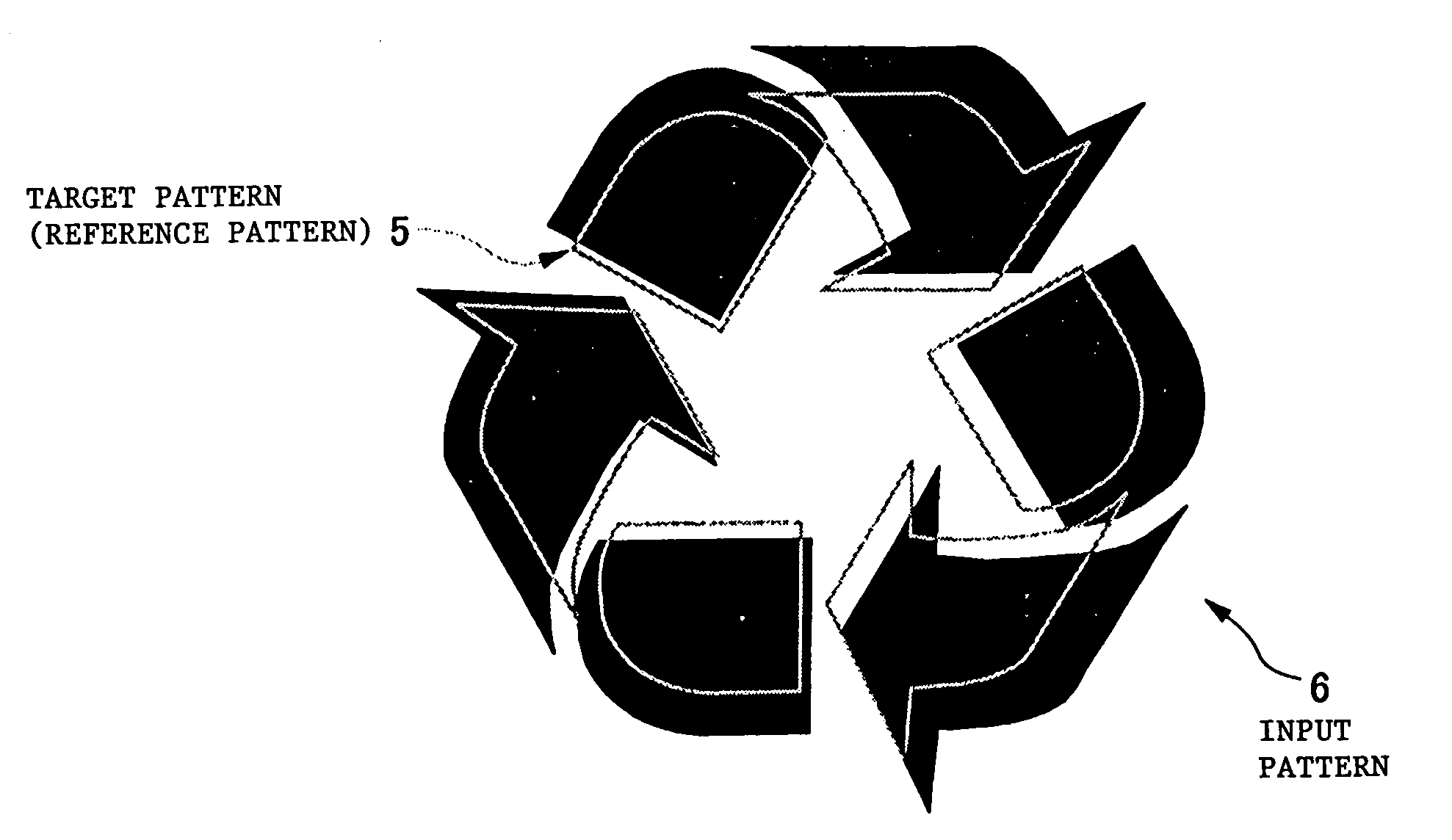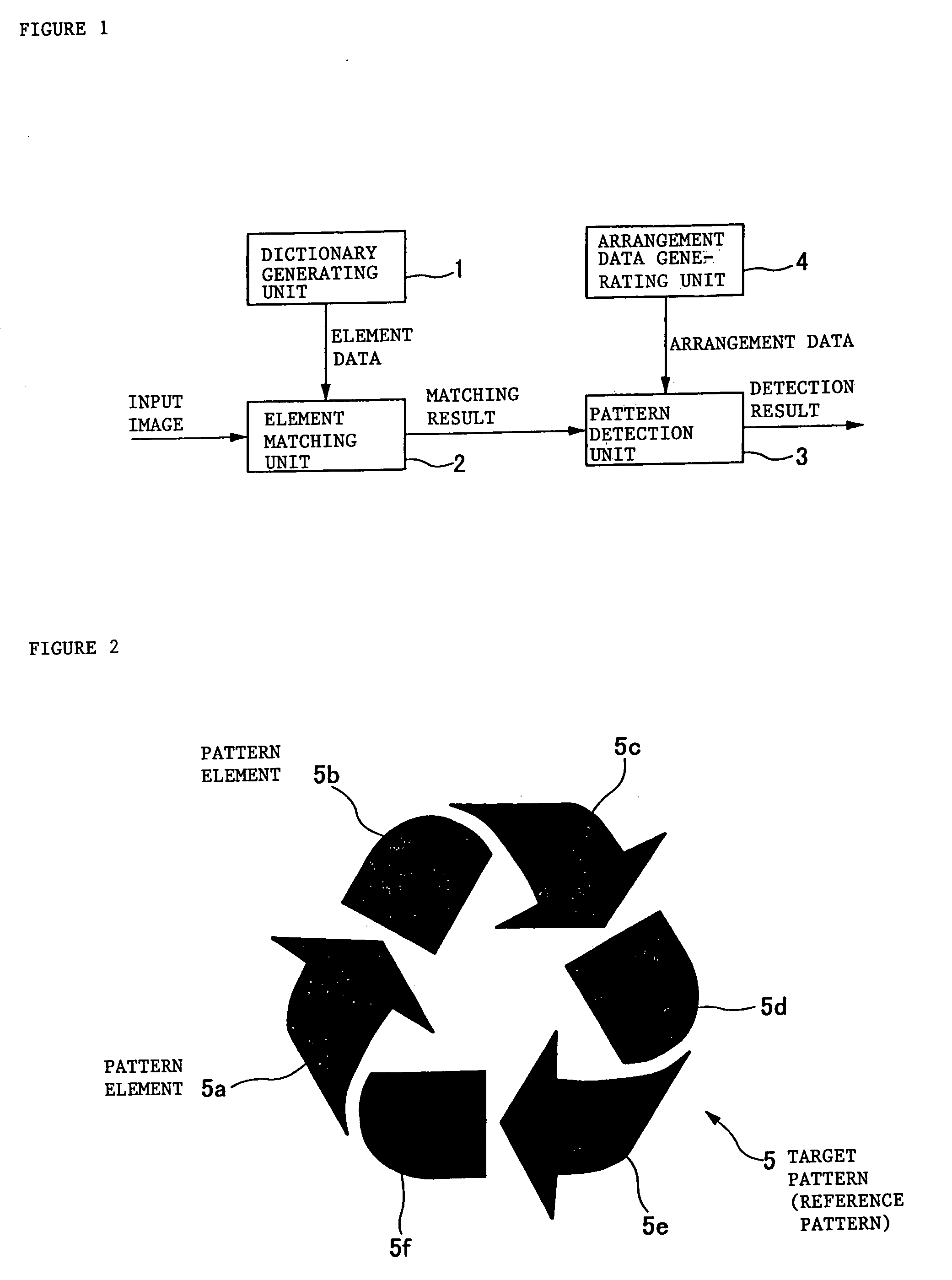Image recognition-processing device and method using pattern elements
a processing device and image recognition technology, applied in the field of image recognitionprocessing device and method using pattern elements, can solve the problems of increasing danger, unable to distinguish a copy from the original image with the naked eye, and the sophisticated capabilities of full-color copy machines, so as to reduce the effect of discrepancy, and reduce the effect of magnification or reduction
- Summary
- Abstract
- Description
- Claims
- Application Information
AI Technical Summary
Benefits of technology
Problems solved by technology
Method used
Image
Examples
Embodiment Construction
[0037]Referring now to the drawings, where like reference numerals designate like elements, there is shown in FIG. 1 a device for image recognition using pattern elements. The device of FIG. 1 comprises a dictionary generating unit 1 which stores dictionary data concerning the target patterns to be detected. This dictionary data is obtained by dividing the target pattern (reference pattern) into a number of regions and storing each as a pattern element.
[0038]For example, according to a prior art algorithm, the target pattern 5 shown in FIG. 2 would be recorded in the dictionary generating unit 1 as a target pattern in its entirety. With the present invention, the target pattern is divided into a number of (here, six) regions, and dictionary data for each region is stored as pattern elements 5a through 5f.
[0039]Using the dictionary data stored in dictionary generating unit 1, element matching unit 2 executes matching processing on the input image. It sends the results of the matchin...
PUM
 Login to View More
Login to View More Abstract
Description
Claims
Application Information
 Login to View More
Login to View More - R&D
- Intellectual Property
- Life Sciences
- Materials
- Tech Scout
- Unparalleled Data Quality
- Higher Quality Content
- 60% Fewer Hallucinations
Browse by: Latest US Patents, China's latest patents, Technical Efficacy Thesaurus, Application Domain, Technology Topic, Popular Technical Reports.
© 2025 PatSnap. All rights reserved.Legal|Privacy policy|Modern Slavery Act Transparency Statement|Sitemap|About US| Contact US: help@patsnap.com



